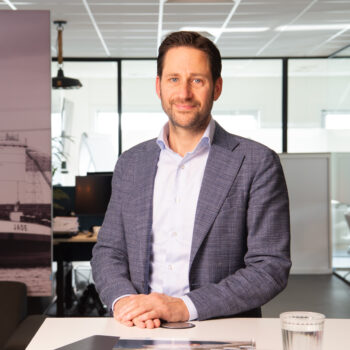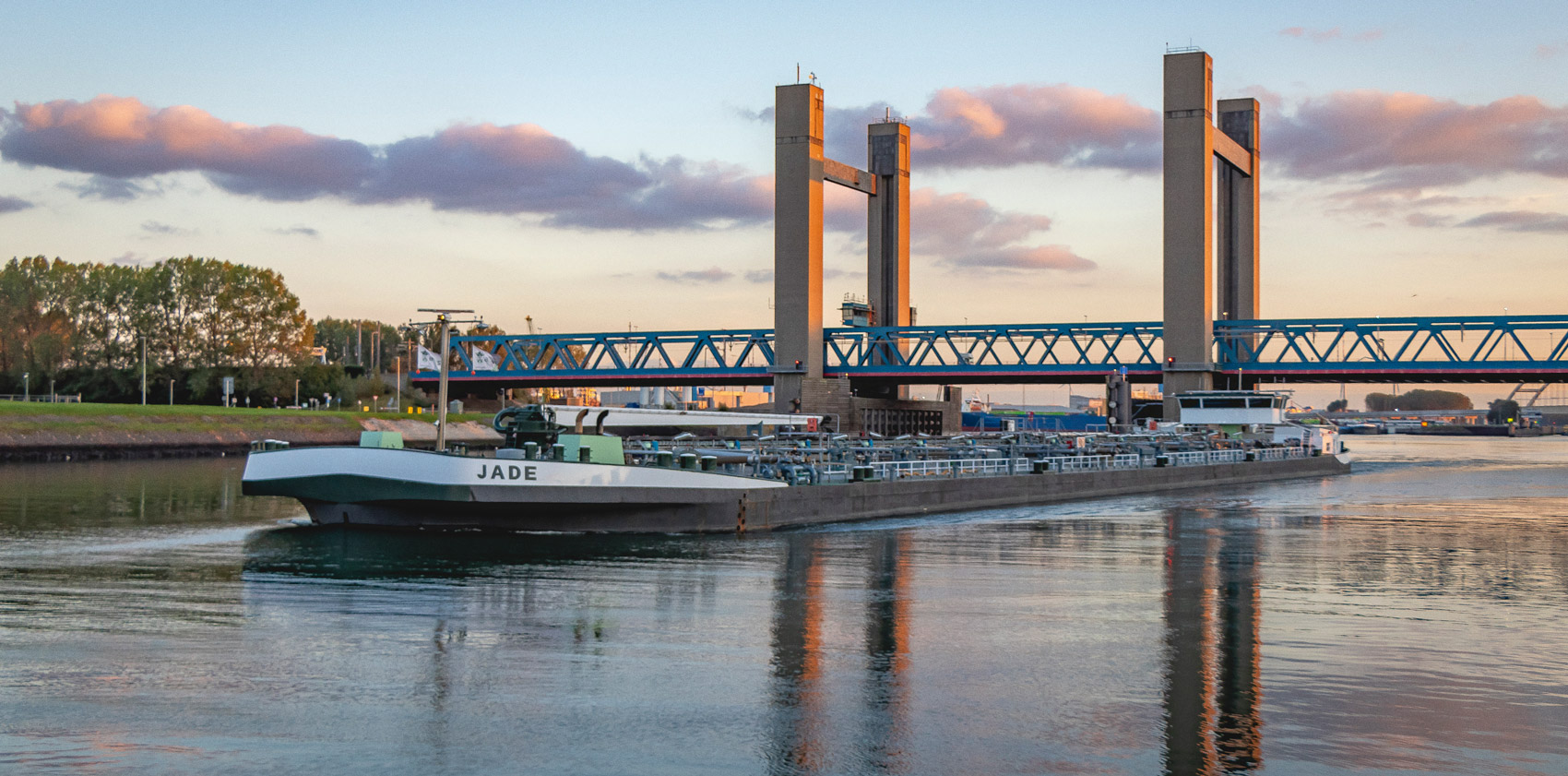The nocturnal brainstormer
How Igor Jansen made inland shipping more sustainable
29 AUGUST 2024 | #ABOUTAMS
Igor Jansen is one of the owners of AMS Barging. In this article, he shares his journey in the inland shipping industry: from cabin boy to co-owner of a tanker shipping company.
From a young age, Igor was certain that he would pursue a career in inland shipping. His father owned an inland tanker, and by the age of fourteen, Igor could often be found on board. During holidays, he always chose the water over other outings: “I preferred joining the voyages over taking summer vacations.”
After finishing secondary school, Igor naturally opted for the Rhine and Inland Shipping program at the Shipping and Transport College (STC) in Rotterdam. For him, it was a relief to be surrounded by fellow students who shared the same passion: “My friends had nothing to do with inland shipping and didn’t know the industry. At STC, I met guys with whom I could finally share that love for inland shipping.”
The program came easily to Igor, and he enjoyed the internships in both tanker shipping and dry bulk: “I had a really great class during that time. It felt good to be surrounded by people with the same ambition. I wanted to push forward and earn my Rhine Patent so I could fulfil my dream of standing in the wheelhouse.”
Gaining experience
After completing his education, Igor began working for Jan van Laar, who had purchased his father’s ship. It was here that he mastered the craft and truly gained experience in the wheelhouse. “During that time, I learned so much whilst having fun. The combination of hard work and good humour suited me perfectly. When the Van Laar-family bought a second ship, I served as the second captain on the stainless-steel tanker for a year. By the age of 21, I had my Rhine Patent in hand and was the second captain”, Igor shares enthusiastically.
“At that moment, the inland shipping world truly laid at my feet”
Entrepreneurial ambition
From an early age, Igor dreamed of building his own ship. In 2002, together with his father and a friend of his father’s, he began the development of the MTS Jade – a remarkable ship measuring 135 meters in length and 20 meters in width, a rarity at the time. This ship was equipped with Z-drives, which were quite uncommon back then. “With two propellers on a single shaft, rotating in opposite directions, we were already saving 15% on fuel. When the Jade was launched in 2004, it immediately became the ship with the largest volume. The market was booming. I literally had a dream start.”

Nocturnal work meetings
In the 2000s, inland shipping was flourishing, and the value of ships was rising rapidly. Igor reflects on that period: “We were buying ships, and as a result, we were on the lookout for good people. In 2006, I crossed paths with Ton van der Molen. We immediately clicked and shared a passion for making inland shipping more sustainable. Ton was eager to get back on the water. He worked one week on board with me and the other week with my father. In the evenings and nights, we could spend hours philosophizing about the ideal inland vessel. In the wheelhouse, we would sketch out the ship of the future. In fact, the MTS Amulet was born from these late-night brainstorming sessions. This was also when Ton became my business partner.”
Diesel-electric innovation
MTS Amulet was built in 2010 with an advanced diesel-electric propulsion system, making the ship exceptionally fuel-efficient and environmentally friendly. Igor recalls the success: “With the Amulet, we created a ship that was unprecedented in inland shipping. We used a third less fuel and won several awards, including ‘Ship of the Year’ at the Maritime Awards Gala and the ‘Mercedes-Benz Efficiency Award.’ Ton and I were certain: we were on the right track, Sustainability also means consuming less fuel.”
Headwinds
After this successful period, a few challenging years followed between 2011 and 2014. “I sailed on the Jade until 2012, after which I moved to the office. Investment opportunities were limited at the time, and we had to be creative”, Igor recalls. During this period, the owner of the MTS Copenhagen, also powered by a diesel-electric system, approached them with a request. His crew was not enthusiastic about the ship, so he asked Igor and Ton to take over its management. Despite numerous technical issues, the young entrepreneurs decided to accept the challenge. They made the ship profitable by thoroughly overhauling its technology.
This approach caught the attention of ABN AMRO, who approached them with a new project: the Ecotankers. Igor explains: “These ships had deeply rooted technical problems. We wrote a plan to restore them and eventually bought the ships ourselves. These LNG-powered vessels were an additional step towards sustainability. Ton was part of the project management team for the construction of an LNG bunker tanker and gained valuable knowledge. We refitted the ships and brought them into operation, suddenly having six vessels under our control.”
Building an office
Around this time, Ton also decided to step off the ship and focus on management. “We started hiring people and professionalizing the organization. From a small rented office, we quickly grew and after three years, we moved to our current office in Hendrik-Ido-Ambacht. Today, we have eleven employees in the office and eleven ships in the fleet. The synergy between the office and the crew has something magical.”
AMS Barging’s sustainable course was further strengthened. “We extended the Nazar to transport more tonnage with the same power and invested in catalysts. Now, five ships are equipped with Stage V or Stage V-compliant technology, and four ships consume 25-30% less fuel. We are the first bunker company in Rotterdam to implement Mass Flow Meters within our bunker permit. Leading the way is simply in our DNA”, says Igor.
Igor sees AMS Barging as a company that stands out from its competitors: “We don’t have brokers or investors. Everything has been built from the ground up, with the help of our team on board and in the office. It’s fantastic to do this with the crew. Together, we work on the best product in the market. Our vision is unique: sustainability and competitiveness go hand in hand for us. Looking ahead, we aim to grow to twenty ships and continue innovating in technology and fuel efficiency. We are investing in our organization and want to be a better employer, providing a safe workplace where people enjoy working. In this way, we are building a solid foundation for further growth and sustainability. And that growth is on track. Next year, we will add three new ships to the fleet.”
